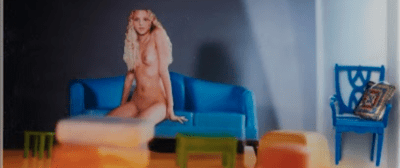Identity Checks: Topic’s Talk Series Tackles Race and Identity at the Brooklyn Historical Society
PHOTOGRAPHY Zach Gross
Last night, the entertainment & storytelling studio, Topic, hosted an important discussion on what identity is, and what it means to us inside the beautiful Brooklyn Historical Society in Brooklyn Heights.
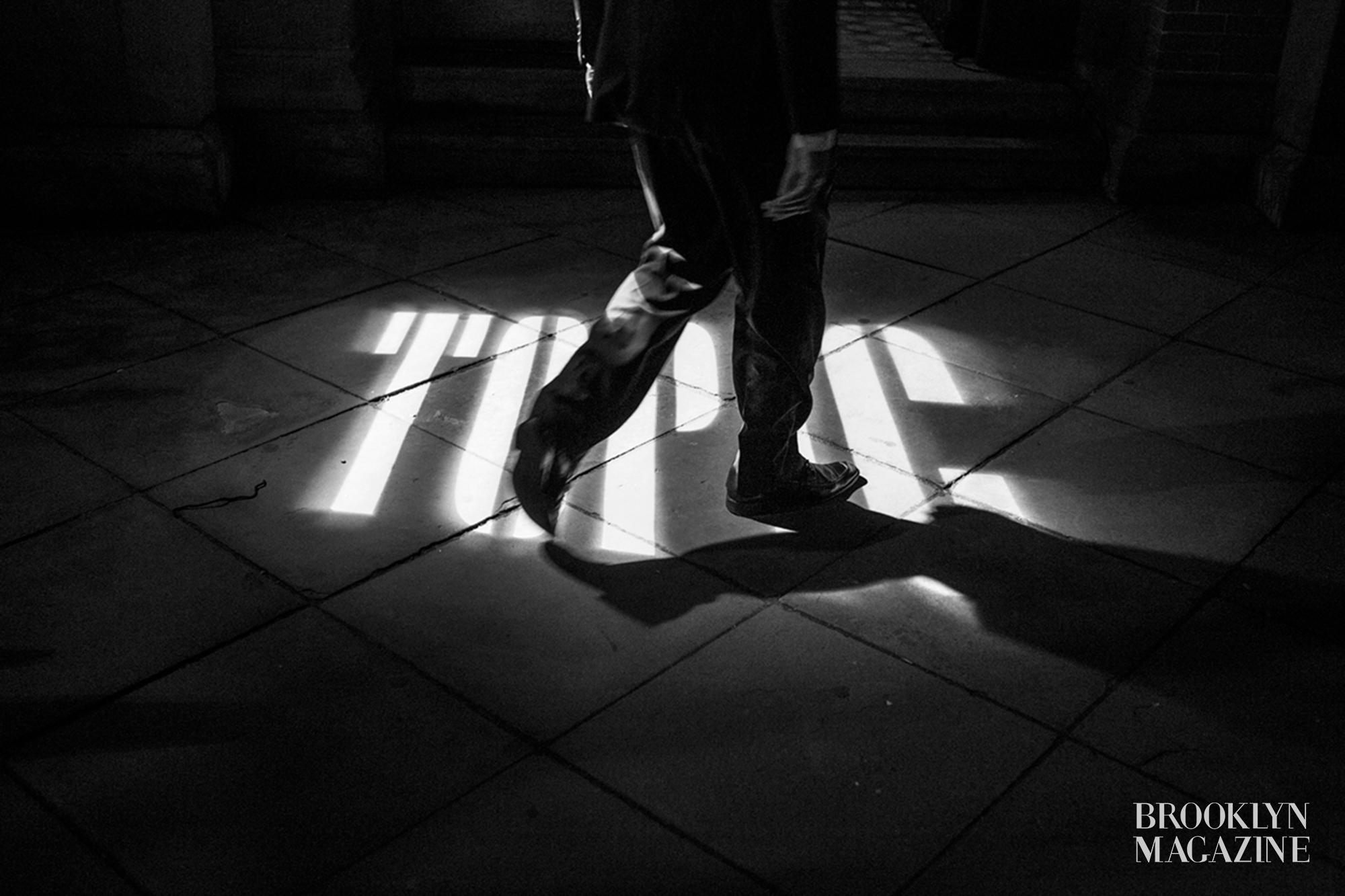 Investigative reporter Nicholas Kulish kicked off last night’s discussion, speaking about his discrepancies between how the world sees him versus how he sees himself as a tall person. He argued that while he sees himself as an author and reporter, those categories of self-identification mattered less when he went out into the world, recalling times where people positioned him as a basketball player. Listening to him made me think about what happens when our definitions of ourselves don’t align with the world’s—and the frustration that inevitably follows.
Investigative reporter Nicholas Kulish kicked off last night’s discussion, speaking about his discrepancies between how the world sees him versus how he sees himself as a tall person. He argued that while he sees himself as an author and reporter, those categories of self-identification mattered less when he went out into the world, recalling times where people positioned him as a basketball player. Listening to him made me think about what happens when our definitions of ourselves don’t align with the world’s—and the frustration that inevitably follows.
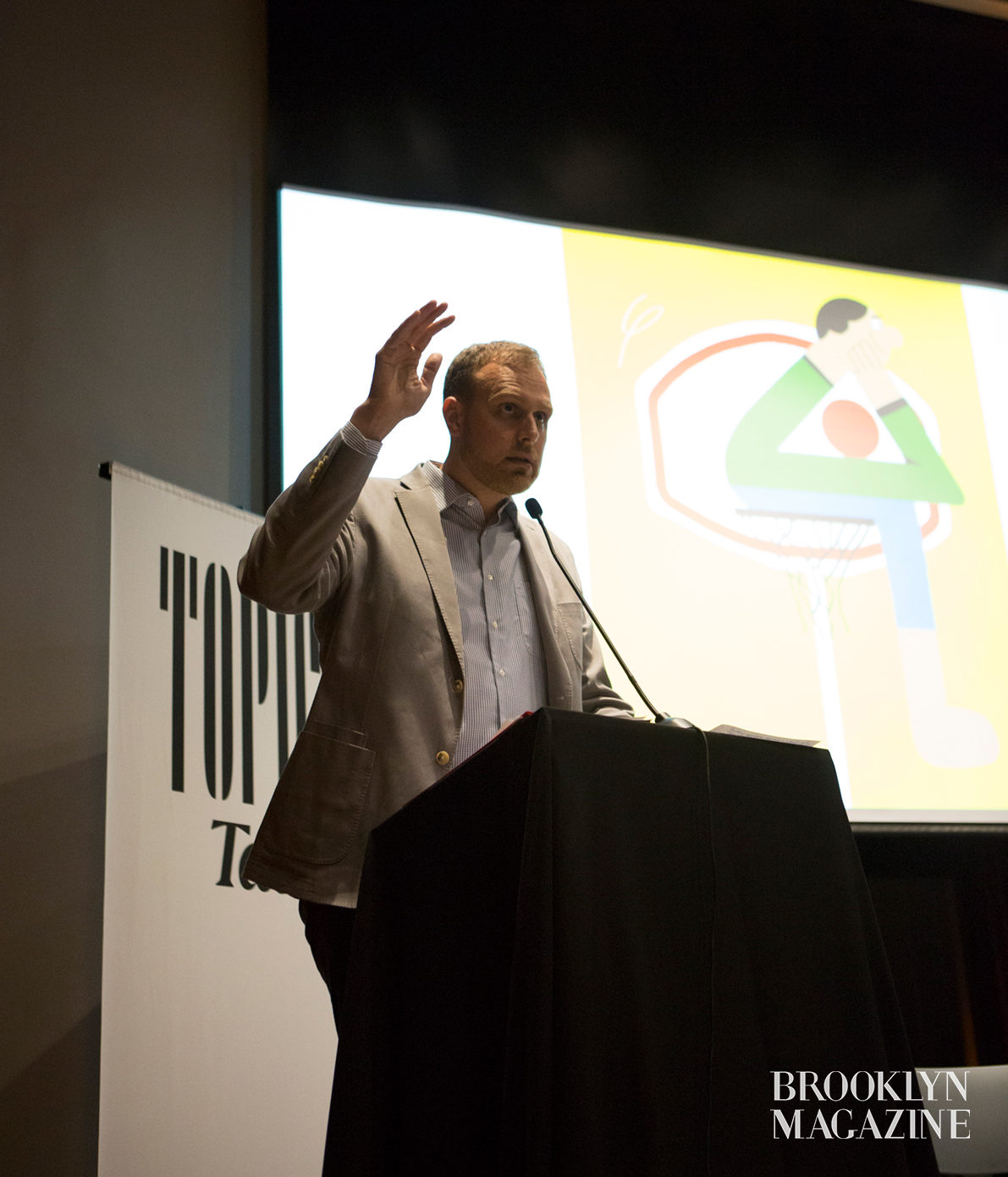

Investigative reporter Nicholas Kulish.
Next, visual artist Shantell Martin shared her story about growing up biracial—half-black and half-white. She explained how kids in school were amazed by her having a white family on her father’s side and how her sibling’s friends were amazed by her being black. Shantell talked about how these experiences informed her art, and why she deals so heavily with black and white in her work—they’re a reflection of her: “We can be who we want to be, we can be who we are, we are who we are.”
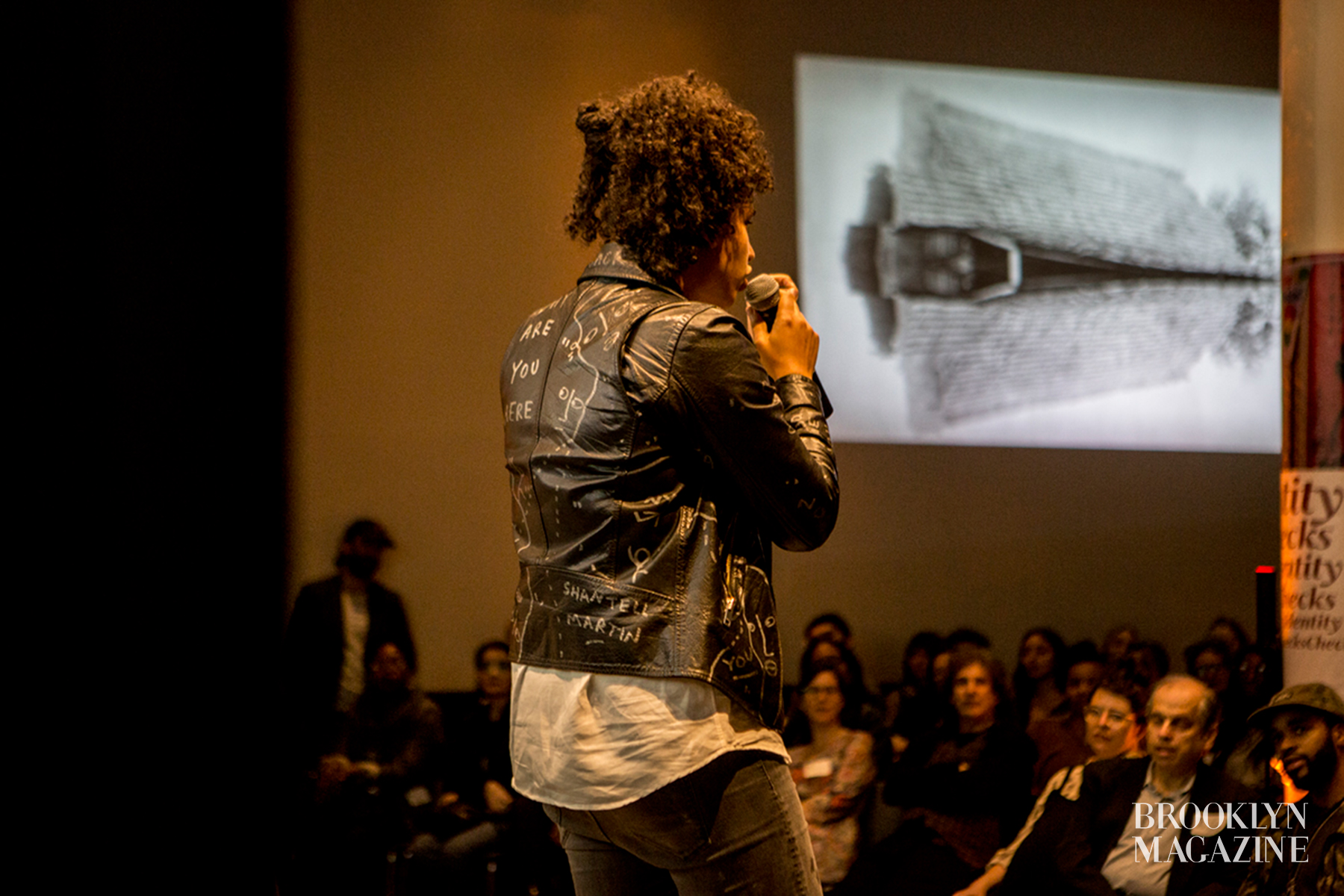

Visual Artist Shantell Martin addresses crowd at Brooklyn Historical Society.
The main event for the night was a discussion about interracial life and love between cultural-critic Rebecca Carroll, fiction writer Mat Johnson, First Look Media SVP of Editorial Anna Holmes, and filmmaker Lacy Schwartzof. Hosting the panel was The Mash-Up Americans editorial director, Amy S. Choi. Lacy expressed how being bi-racial, not wholly belonging to either parts of her mixed-race identity, made it difficult for her to feel a sense of belonging. That was until she realized there was a whole group of bi-racial people she can relate to.
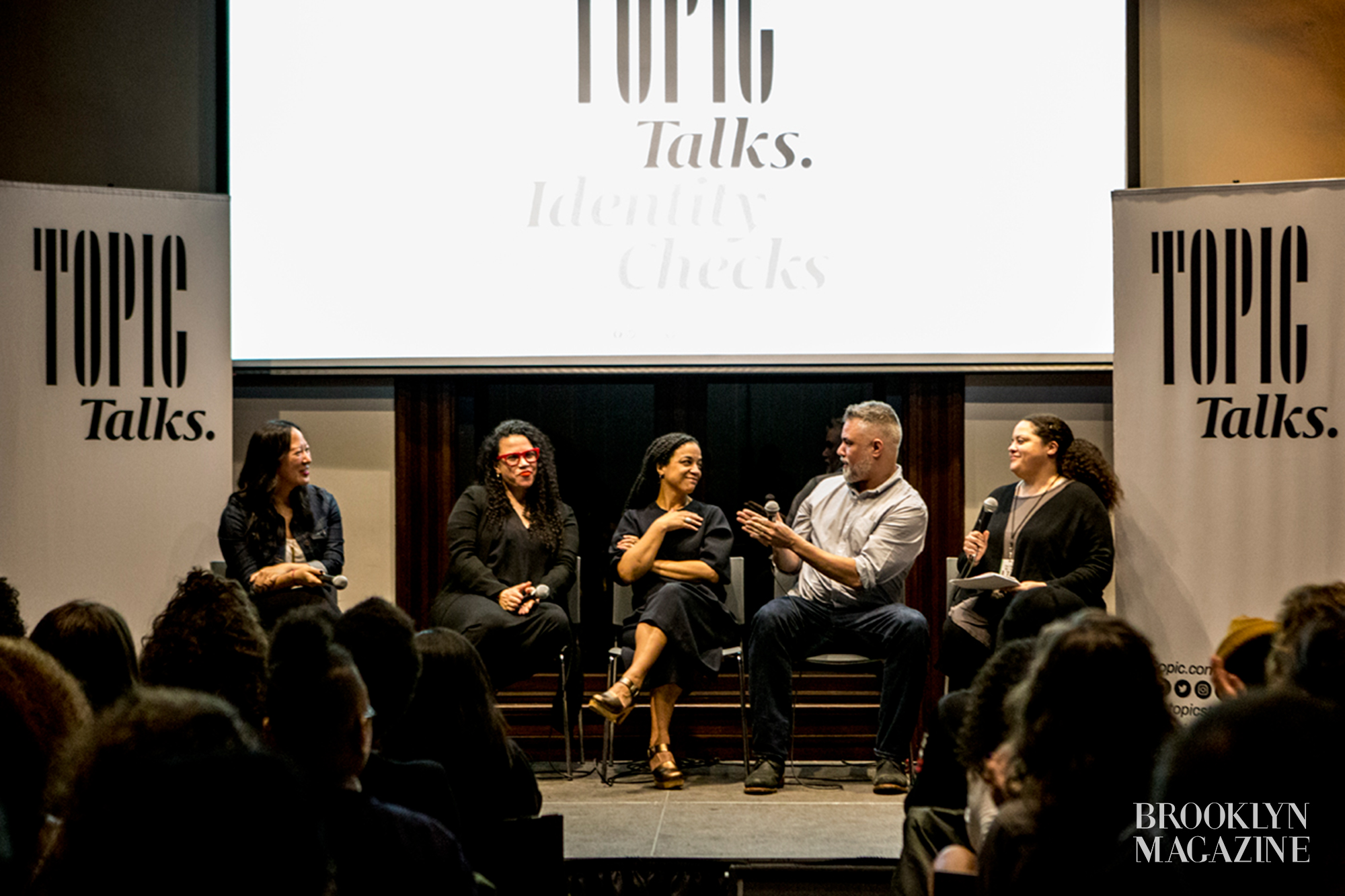

From left to right: Amy S. Choi, Lacy Schwartz, Rebecca Carroll, Mat Johnson, and Anna Holmes talking interracial identity.
For Rebecca, feeling a sense of belonging happened at a restaurant with her son, where he had said to her, “Why is everyone white here?” At that moment, Rebecca realized that her son identified not only identified her as black, but also himself. She talked about feeling at ease, knowing that her son had a strong sense of who he was. Being half-black and half-white, Anna had always interrogated herself about who she should she be — but it was this interrogation that she’s ultimately learning to be comfortable with.
While being questioned by other people, especially when we don’t have answers, is often an uncomfortable experience, learning to be comfortable with our own questions was a big takeaway of the evening. And it helped me see that regardless of what the world may want to identify us as, we must learn to see ourselves for who we are.
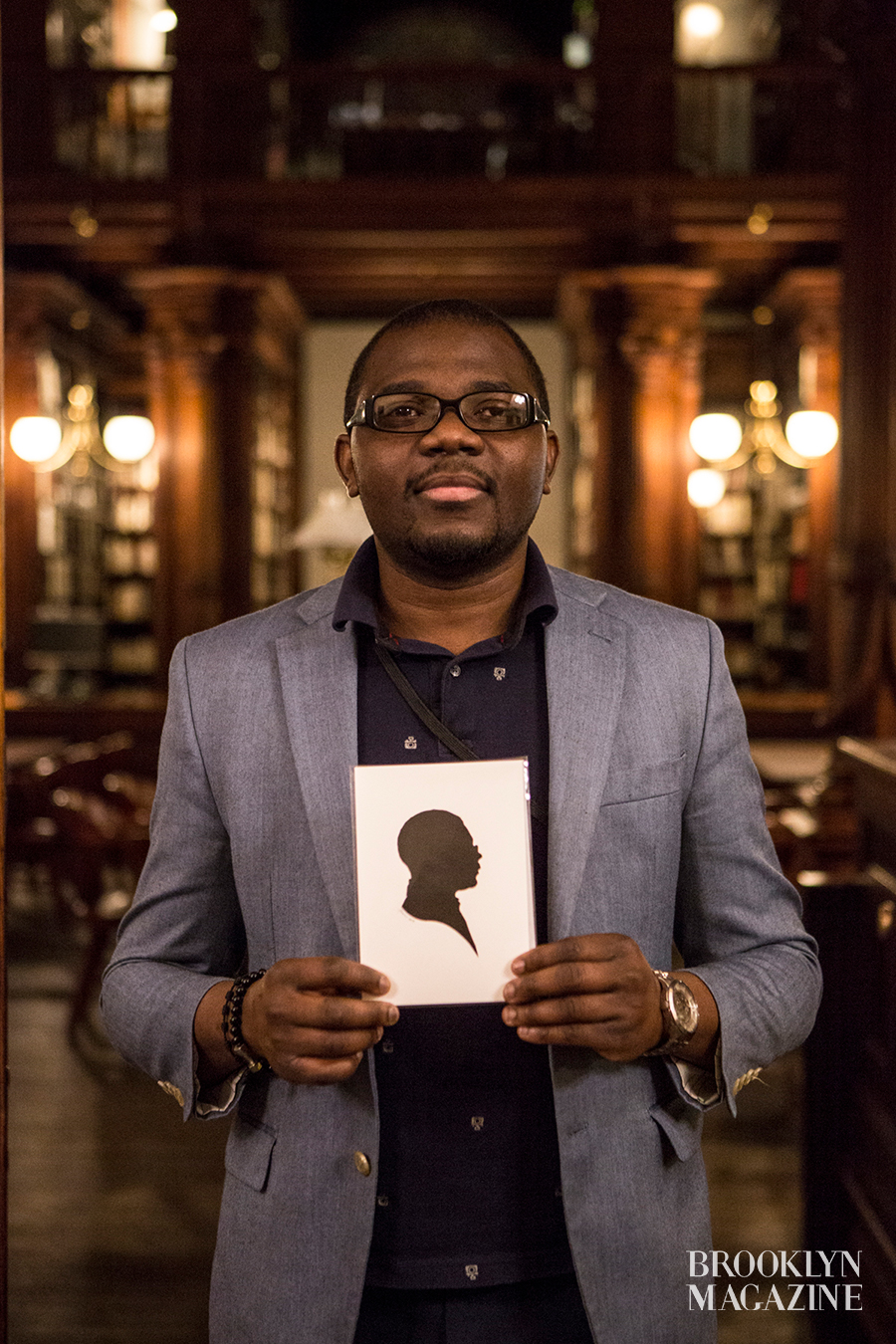

Attendee of the event holds silhouette of himself made by Sherry Lane and Jenny Fowler.
You might also like 




















